Charging guide: type 1 and type 2
What is type 1 and type 2?
The term «type» refers to different generations of plugs used for AC charging (alternating current) of electric vehicles. Primarily, cars delivered in Europe from 2018 and onwards are equipped with a type 2 charging connector. Older vehicles and those manufactured in Asia and North America come with a type 1 charging connector.
Type 1 plug and connector
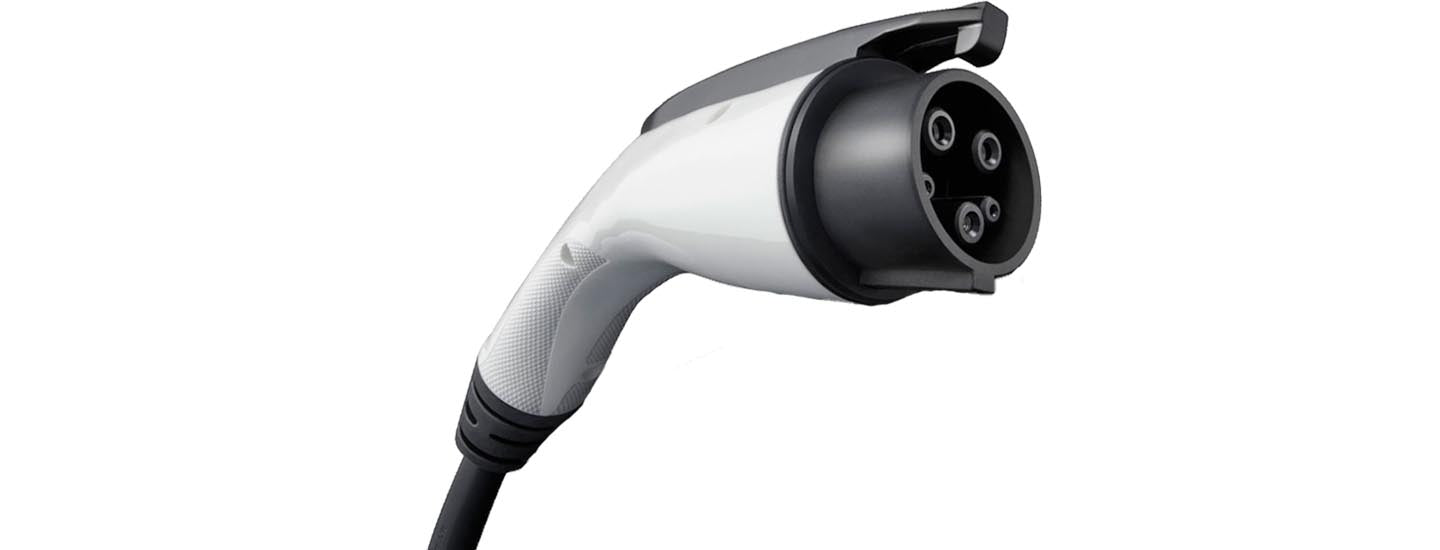
Type 1 plug to the car
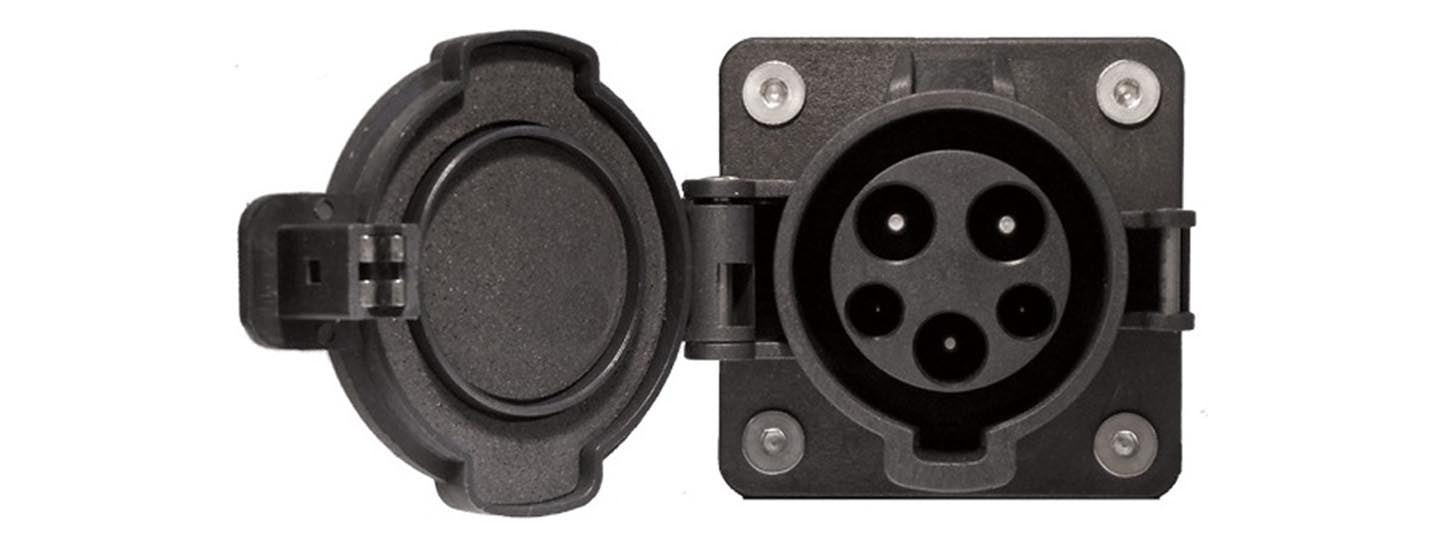
Type 1 charging connector to the car
The Type 1 standard (J1772) only supports charging on 1-phase, which gives a maximum charging power of up to 7.4kW (32A / 1-phase / 230V). The standard is mainly used on car models from Asia. For example, the Nissan LEAF (1st gen), Kia Soul EV, Mitsubishi Outlander PHEV and the triplets use this charging connector and plug.
In a type 1 plug/plug, the locking mechanism controls a switch and this switch is connected to the lever that releases the anchorage to the car. When the lever is pressed down, a microswitch is activated which sends a signal to the car. The result is that the signal pin (CP) changes resistance value, which means that the car will end the charging process and that the connection (connector and plug) will be free of current before the plug/plug is removed.
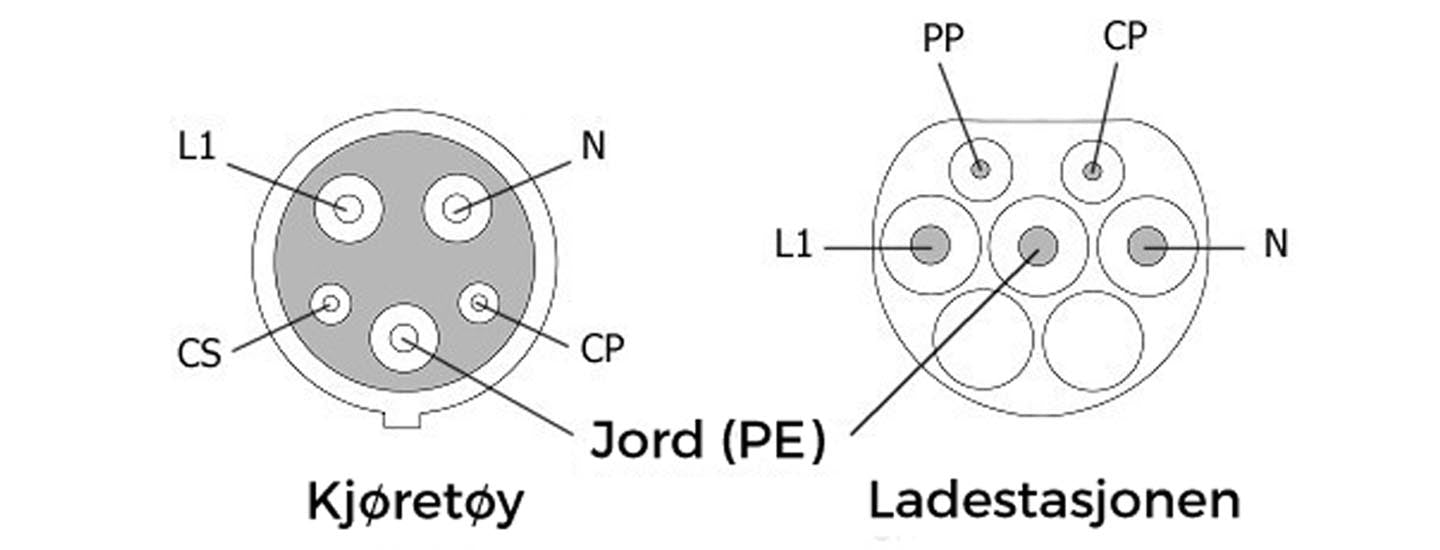
Type 2 plug and connector

Type 2 (female) charging plug to the car

Type 2 charging connector with CCS fast charging in the car
Type 2 (IEC-62196) was designed by Mennekes, and the company name is often used as a popular term. The standard has been developed for the European power grid (TN-S) for alternating current (AC) and has a charging power of up to 43 kW (400V, 63A). The type 2 charging cable has either 3 conductors (1-phase) or 5 conductors (3-phase). In addition to "N-conductor", you will also find L1, L2 and L3 (3-phase). Type 2 charging cable with 4 conductors can charge the car with a triple capacity (3-phase). The charging capacity is respectively 3.7kW (16A) and 7.4kW (32A) for 1-phase, and 11kW (16A) and 22kW (32A) 3-phase.
Most cars manufactured in Europe are delivered with this connector, including Tesla's cars in Europe. Cars with this connector are often also delivered with the possibility of fast charging in the form of the Combined Charging System (CCS). The exception is Tesla's electric cars, which also use the type 2 connector for fast charging via their "SuperCharger" network, as they have a modified version of the same plug and connector. For example, cars such as the VW e-Golf, BMW i3 and Tesla Model S use this charging connector and plug. Most public charging stations are equipped with a type 2 connector.
Safety is ensured by having a short signal pin (CP) and a long signal pin (PP). If the plug is removed from the charging station or car, the short signal pin (CP) will disconnect the voltage before the plug is disconnected from the socket. In this way, any sparks/arcs are avoided so that contacts or plugs are damaged. This extends the durability of the connector and charging cable.
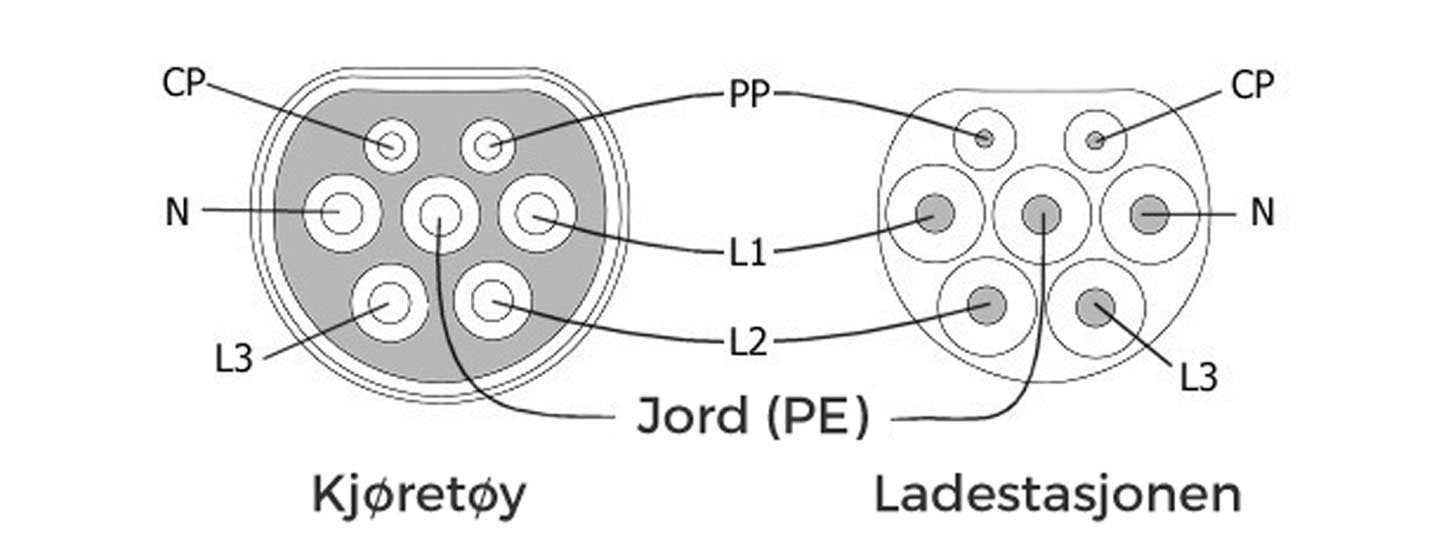
Do i need a type 1 or type 2 charging cable?
Electric cars and plug-in hybrids are delivered with either a type 1 or type 2 charging connector in the car. This is what determines the kind (type of plug) charging cable you need. When charging from a charging station / charging box, the charging cable will always have a type 2 plug for the charging station (e.g. public charging post/station) and only the plug towards the car will be either type 1 or type 2.
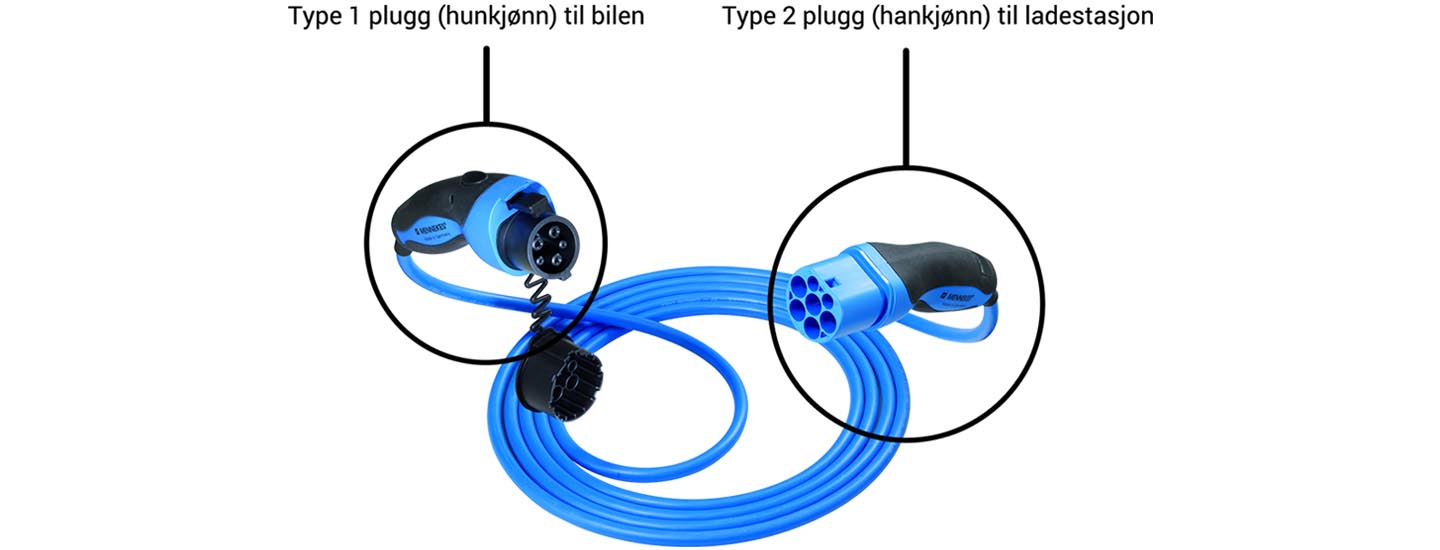
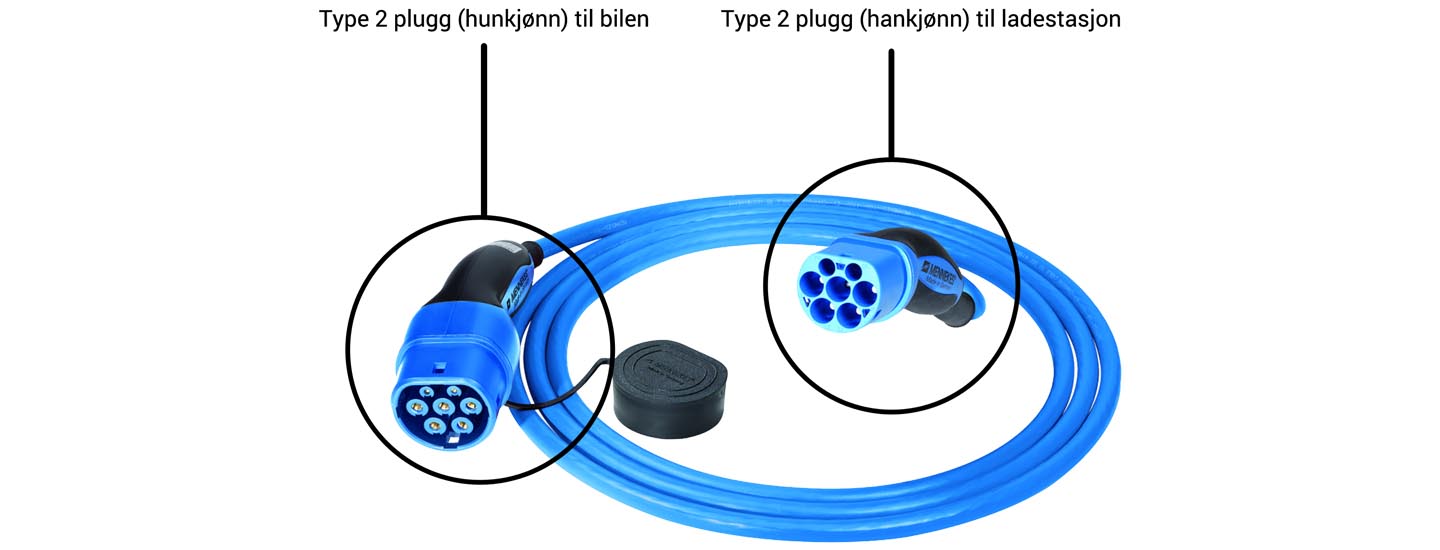
For example:
- The Nissan LEAF has a type 1 charging connector in the car, and thus needs a type 2 plug (for the charging station) and a type 1 plug for the car (Type 2 to type 1)
- The Volkswagen e-Golf has a type 2 charging connector in the car, and thus needs a type 2 plug for the charging station and a type 2 plug for the car (Type 2 to type 2)
Use our charging guide to find which charging sockets your car has.
Amperage and phases: 16a or 32a? 1- or 3- phase?
The number of amperes (16A or 32A) and the number of phases (1- or 3-phase) define the power the charging cable can deliver. The higher the amps and more phases, the higher the power. 3-phase charging cables support charging from both 1-phase and 3-phase. Likewise, 1-phase charging cables can be used against power sources with 3-phase, however, it will only be able to draw from 1-phase and thus give a lower power. Generally speaking, we recommend acquiring a 32A charging cable as it has the fewest possible limitations and is most forward-looking. Type 1 supports only 1-phase and type 2 supports both 1- and 3-phase.
| Mode 3 - 16A charging cable | Mode 3 - 32A charging cable | |
| Advantages | + More affordable than 32A cables + Thinner and easier to handle |
+ Provides maximum power + Compatible with all charging stations with type 2 outlets |
| Disadvantages |
– In some cases, may not work on 32A outlets charging stations – Limited power when used with vehicles that support 32A |
– Costs somewhat more than 16A cables – Somewhat thicker and less manageable |
 FedEx delivery in the EU
FedEx delivery in the EU
